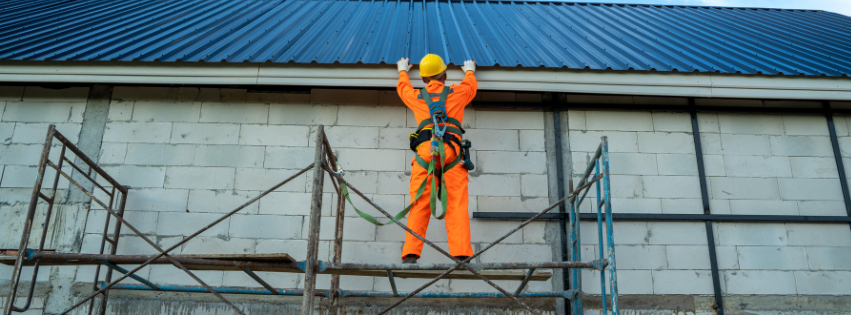Working at height
How high is high? Explaining its not all about the height and is as much about the task being done, read on for a quick overview of accidents at height.
7/2/20252 min read


Working at Height – What the Law Says and What to Do if You're Injured
Working at height remains one of the most dangerous aspects of many jobs—even when the height is just a few feet. If you’ve suffered an injury while working above ground level, you might wonder whether you have a claim. The short answer: yes, if your employer failed to follow safety rules, you're protected by law.
The Law: Work at Height Regulations 2005
The main legislation covering this is the Work at Height Regulations 2005. These rules place legal duties on employers to ensure that:
All work at height is properly planned and supervised
The work is carried out safely using suitable equipment
Employees receive adequate training
Surfaces and equipment are checked and maintained
The law defines “working at height” as any place where a fall could cause personal injury, even if that’s a short drop from a step, ladder, or platform.
Reference Case: Only a Few Feet Off the Ground
In our blog on how to report an accident at work, we discussed the case of Mr C, who fell just three feet while climbing a fixed ladder to store a suction hose. The ladder had been fastened with rope, which failed—causing Mr C to fall backwards onto a brass pump, injuring his back and coccyx.
The employer tried to argue he slipped because the ladder was wet—but this was dismissed. He had been trained to carry wet hoses, and the real issue was poor ladder maintenance.
The case was successfully pursued by Chris Hutchinson on a No Win No Fee basis, resulting in a £40,000 settlement. It’s a perfect example that injuries from even low heights can lead to valid claims.
Mr B’s Case: Faulty Scaffolding Tower
Another example is Mr B, who was working on an indoor scaffolding tower in a warehouse. Although on level ground, there was a slight indentation in the concrete floor. The tower’s brake was faulty, and it rolled a few inches over the dip—causing Mr B to lose his footing and stumble. He sprained his wrist while trying to stabilise himself.
Though he didn’t fall, his injury still qualified under the Work at Height Regulations, as he was working on an elevated, unstable structure due to employer negligence.
Common Injuries from Working at Height
Working at height incidents often lead to:
✔️ Broken bones – especially arms, wrists, or collarbones
✔️ Back or spinal trauma
✔️ Concussion or head injuries
✔️ Long-term psychological injuries (fear of heights, anxiety)
Even low falls can cause serious disruption to your health, job, and finances.
No Win No Fee Help for Working at Height Injuries
At Inson Legal, we understand how injuries affect your life. We offer a No Win No Fee service to ensure that money isn't a barrier to justice. If your case doesn't succeed, you won’t pay us a penny.
You'll deal directly with solicitor Chris Hutchinson, who handles all working at height cases personally—no middlemen, no call centres.
Want to Learn More?
✅ Visit our Accidents at Work page for more information on employer responsibilities and workplace health and safety.
✅ Check out our guide on how to report an accident at work if you’ve just suffered an incident.
Speak to Chris Hutchinson Today
If you've been injured working at height—even if it was “just a few feet”—don’t guess about your rights. Call Chris Hutchinson directly for a confidential conversation and get the clarity you need to move forward.
© 2025. All rights reserved.
Inson Legal Limited registered address Inson Legal, St Peter's House, Silverwell Street, Bolton, BL1 1PP. Main practicing address Mill of Old Mains, Alford, AB33 8RN. Inson Legal Limited trading as Inson Legal is authorised and regulated by the Solicitors Regulation Authority 8011113






Inson Legal Limited, St Peter's House, Silverwell Street, Bolton, BL1 1PP